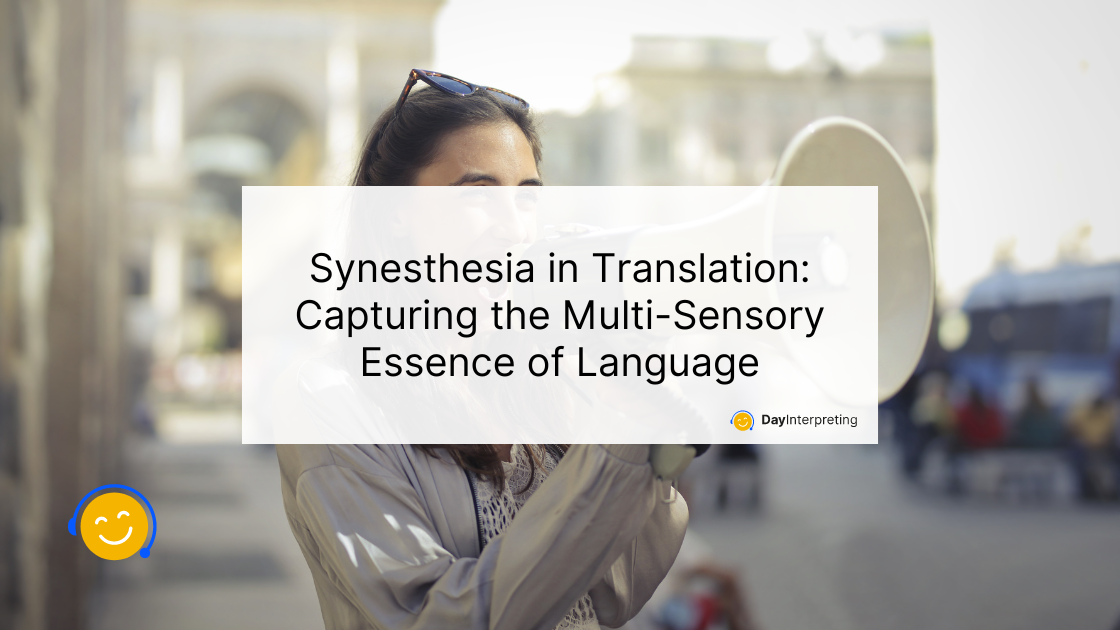Imagine if you could taste colors or see sounds. It sounds like something out of a science fiction movie, right? But for some people, this is a real-life experience. This fascinating phenomenon is called synesthesia, and it’s a rare condition where one sense is simultaneously perceived as if by one or more additional senses. For example, someone with synesthesia might hear a word and instantly see a specific color or taste a particular flavor. Now, imagine how cool it would be if this unique way of experiencing the world could be used in translation. Let’s dive into the world of synesthesia in translation and explore how it can add a whole new dimension to translating languages.
What is Synesthesia?
Synesthesia comes from the Greek words “syn,” meaning together, and “aisthesis,” meaning sensation. So, it literally means “joined sensation.” People with synesthesia, known as synesthetes, experience a blending of their senses. This means they might see numbers in color, taste words, or hear shapes. There are many different types of synesthesia, but some of the most common include:
- Grapheme-color synesthesia: Letters and numbers are perceived as colored.
- Chromesthesia: Sounds trigger colors.
- Lexical-gustatory synesthesia: Words or sounds trigger tastes.
The Magic of Synesthesia in Translation
Translation is often seen as a process of converting words from one language to another. But what if translation could go beyond mere words and also convey the sensory experiences associated with those words? For instance, if a French word evokes the color blue, how could that be effectively translated for an English speaker? This is where synesthesia can truly work its magic in translation. By capturing the multi-sensory essence of language, translations can be elevated to a new level of richness and vibrancy.
Translating Beyond Words
Imagine the joy of reading a book and being able to smell the flowers described in a garden scene or taste the delectable food at a banquet. This level of immersion could be within reach with synesthetic translation. By translating the sensory experiences associated with words, translators can craft a more captivating and immersive reading experience. For instance, a synesthetic translator might select words that elicit similar sensory responses in the target language, thereby making the translation more vivid and evocative.
Synesthetic Translators: Bridging Two Worlds
Synesthetic translators are like wizards who can bridge the gap between languages and sensory experiences. They don’t just translate words; they translate the feelings, tastes, colors, and sounds that come with those words. This kind of translation requires a deep understanding of both languages and the ability to convey sensory experiences through words.
A Day in the Life of a Synesthetic Translator
Let’s take a peek into the life of a synesthetic translator. Imagine you’re translating a poem. The original poem describes the sound of the wind as a soft whisper and mentions the taste of cherries. As a synesthetic translator, you would find ways to capture these sensory details in the translation. You might choose words in the target language that evoke a similar sound for the wind and a similar taste for the cherries. This way, the readers can experience the poem multi-sensory, just like the original.
Challenges and Rewards of Synesthesia in Translation
Synesthetic translation isn’t without its challenges. One of the biggest challenges is that not everyone experiences synesthesia, so it can be tricky to convey these sensory details to someone who doesn’t have the condition. Additionally, different cultures might have different sensory associations with words. For example, the taste of cherries might evoke a different feeling in one culture compared to another.
Despite these challenges, the rewards of synesthetic translation are immense. By capturing the multi-sensory essence of language, translations can become more expressive and engaging. Readers can enjoy a richer, more immersive experience that goes beyond just reading words on a page.
Bringing Stories to Life
One of the most exciting rewards of synesthetic translation is how it brings stories to life. Imagine reading a story where you can feel the heat of the sun, smell the salty sea air, and hear the chirping of birds. Synesthetic translation can make this possible by capturing and conveying these sensory details. This kind of immersive storytelling can transport readers to different worlds and make the reading experience more enjoyable and memorable.
The Future of Synesthesia in Translation
As technology advances, the future of synesthetic translation looks promising. With the help of artificial intelligence and machine learning, it might be possible to develop translation tools that can identify and convey sensory details. These tools could analyze texts for sensory cues and suggest translations that capture these multi-sensory experiences.
Imagine a future where translation apps can not only translate words but also convey the sensory experiences tied to those words. This could revolutionize how we experience translated content, from books and poems to movies and video games.
Embracing a Multi-Sensory World
In conclusion, synesthesia in translation is a fascinating field that has the potential to transform how we experience language. By capturing the multi-sensory essence of language, synesthetic translators can create richer, more engaging translations. While there are challenges to overcome, the rewards are immense, offering a new way to bring stories and experiences to life. So, next time you read a translated work, imagine what it would be like if you could taste, smell, and hear the words. Welcome to the magical world of synesthesia in translation!





0 Comments